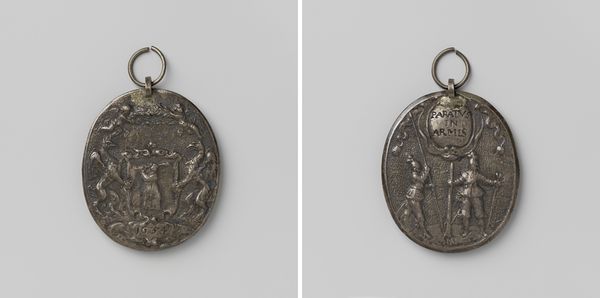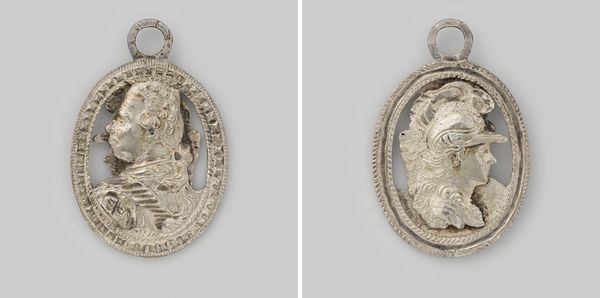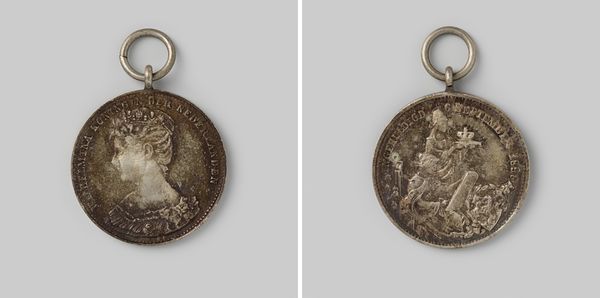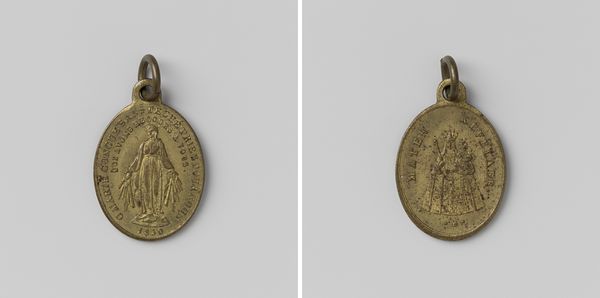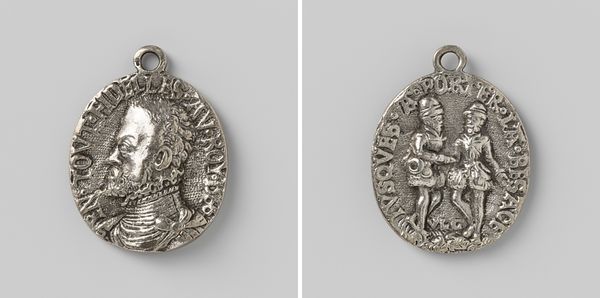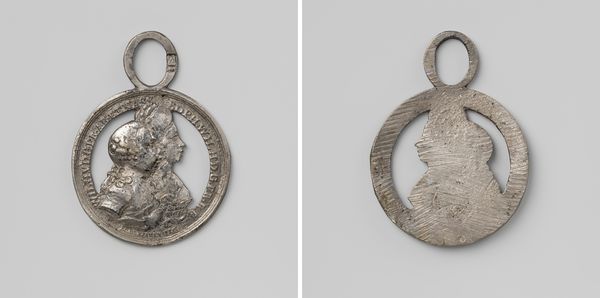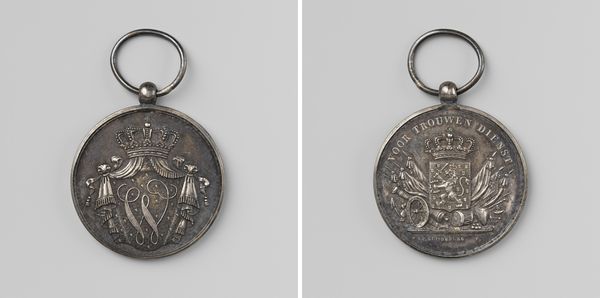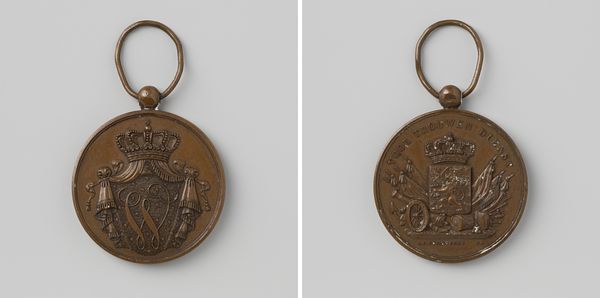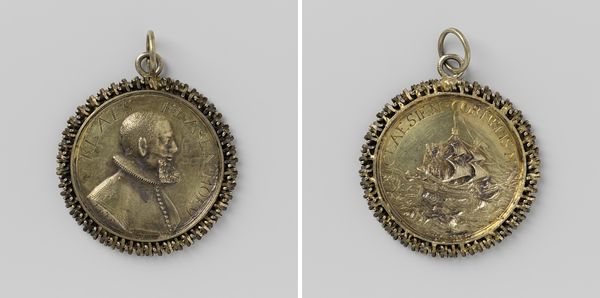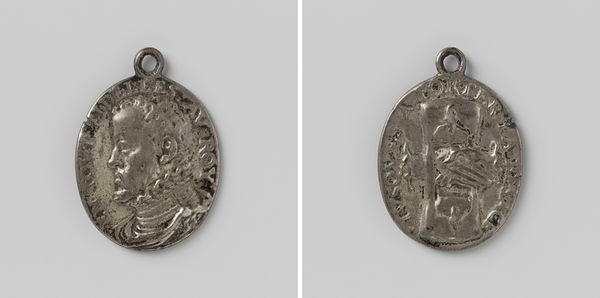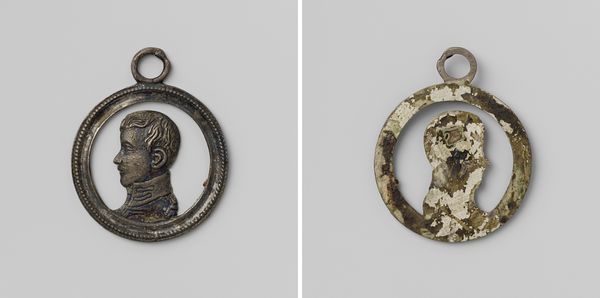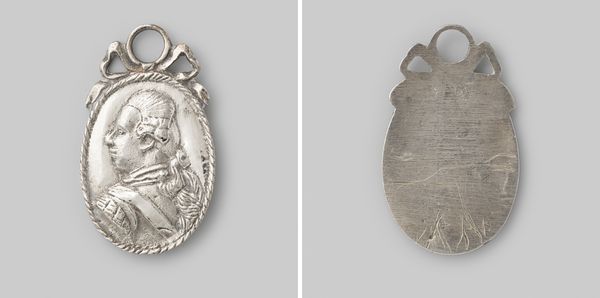
#
3d sculpting
#
3d model
#
wedding photograph
#
product fashion photography
#
jewelry design
#
virtual 3d design
#
3d shape
#
wearable design
#
3d modeling
#
bridal fashion
Dimensions: length 4.9 cm, length 4.1 cm, width 2.7 cm, weight 120 gr
Copyright: Rijks Museum: Open Domain
These two Beggars' Medals were made of silver, likely die-struck, in the 16th century by Jacques Jonghelinck. They show a portrait of William the Silent, a key figure in the Dutch Revolt against Spanish rule, and a beggar's bowl with two clasped hands. The material, silver, is precious, but here it takes on a subversive meaning. These medals were worn by the Geuzen, Dutch nobles who opposed Spanish rule. The process of minting these medals was a way of mass-producing political statements. It allowed for the widespread dissemination of a message of resistance, transforming a symbol of poverty into a badge of honor. It is an early example of political propaganda using wearable objects. The Beggars' Medals cleverly invert notions of value and status, challenging the clear distinctions that are often made between high art, craft, and political activism.
Comments
rijksmuseum about 2 years ago
⋮
From 1566 noblemen begin wearing medals to present themselves as Geuzen (Beggars). On the obverse of this medal is a portrait of Philip II and a French inscription: ‘Faithful to the king.’ Yet on the reverse is a pair of clasped hands with a beggars’ pouch and the inscription ‘to the point of wearing the beggars’ pouch.’ Together they form one sentence. The owner of such a medal recognizes the Spanish king, but opposes his policy.
Join the conversation
Join millions of artists and users on Artera today and experience the ultimate creative platform.
